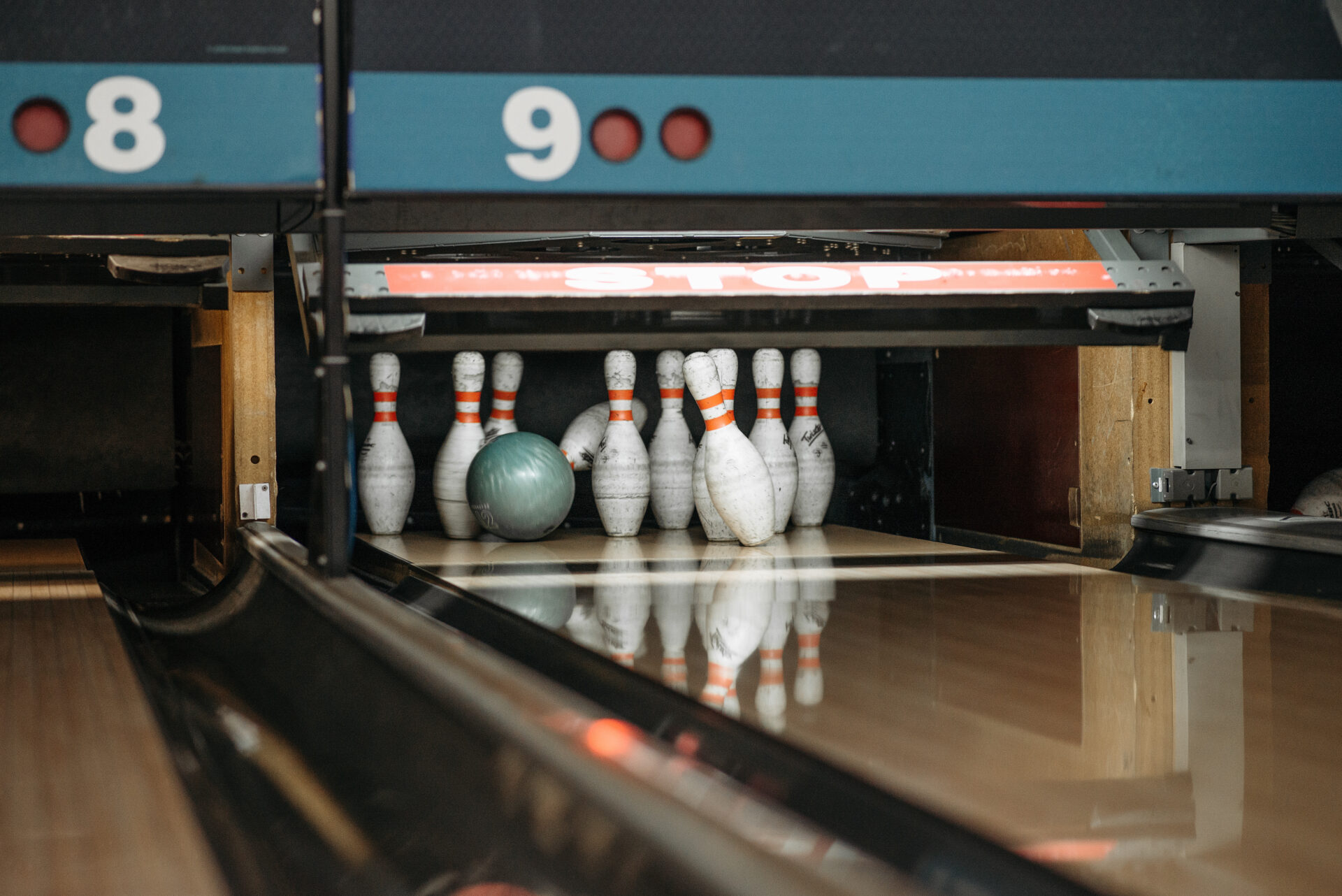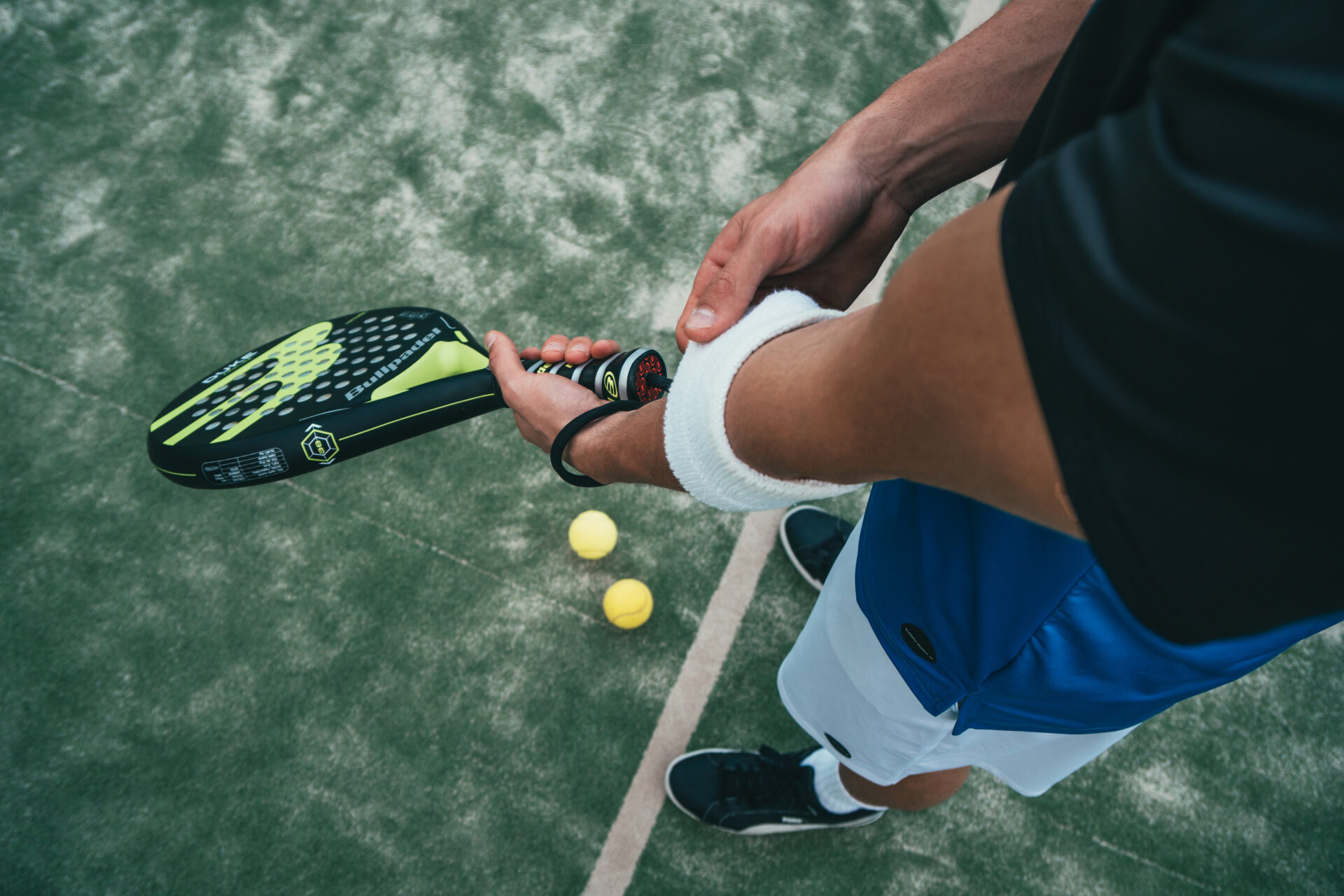Putting a spin on a bowling ball is an important skill to develop if you want to be successful at bowling. A spin can help you control the direction and speed of the ball, allowing you to target specific pins or areas of the lane. Developing a good spin can take some practice, but with the right technique, you can become an expert in no time. In this article, we’ll discuss how to put a spin on a bowling ball and provide tips for mastering this technique.To grip a bowling ball for a spin, start by positioning the ball in your dominant hand. Place your thumb in the hole of the ball and wrap your fingers around the sides of the ball. Make sure that your middle finger is extended and touching the bottom of the ball. Then, slightly curl your other fingers and place them on top of the ball. Finally, hold the ball close to your body and slightly tilt it so that you are able to generate a spin when you throw it.
What is the Ideal Bowling Ball Weight for Spinning?
Choosing the right bowling ball weight is important for achieving maximum spin potential on the lane. The ideal weight for a bowling ball that is designed to spin is between 12 and 16 pounds. This range allows a bowler to generate enough speed and power to create an efficient amount of spin on the ball. Heavier balls will cause too much friction on the lane and will not create enough spin, while lighter balls will not have enough energy to create consistent spin.
The right bowling ball weight can help ensure that a bowler’s technique is correct and effective. By using a heavier ball, it will help force the bowler to use proper technique in order to avoid over-rolling or skidding on the lane surface. A lighter ball can also help improve accuracy and consistency with each shot as it will more closely follow a straight line trajectory.
When selecting the ideal weight of bowling ball, it is important to consider both physical strength and skill level. For beginner bowlers, a 12 or 13 pound ball may be best as they are more likely to have less power behind their delivery. Experienced bowlers may prefer heavier balls as they can generate more power with their technique. Ultimately, it comes down to personal preference but most bowlers find that 12-16 pounds provides them with optimal results when it comes to spinning their shots down the lane.
Using a Hook to Create a Spin on the Bowling Ball
Creating spin on a bowling ball is an important part of improving your bowling game. Using a hook can help you create more spin and increase your chances of getting strikes. The key to creating spin is understanding how the ball reacts when it hits the pins. By using different techniques such as drilling, weighting, and hooking, you can control the speed and spin of your bowling ball.
When drilling your bowling ball, you will want to make sure that you are creating an angle that will cause the ball to spin. If you drill too deep, you may not create enough spin to get the desired result. You’ll also want to make sure that the holes are not too close together as this could reduce the amount of spin created.
Weighting your bowling ball is another way to create more spin on your shots. By adding weight to specific areas on the ball, you can manipulate the way it spins in different directions. When weighting a bowling ball, it is important to keep in mind that more weight does not always mean more spin; too much can actually cause less spin than desired.
Finally, using a hook can help you control the direction and speed of your bowling ball when it makes contact with the pins. A hook is created by angling one side of your fingers in towards or away from your body while gripping the ball before releasing it down the lane. This technique allows for more control over how hard or soft you throw and can help create extra spin on each shot.
By understanding how different techniques such as drilling, weighting, and hooking affect your bowling game, you can better control how much spin is created when making each shot. With practice and patience anyone can learn how to use these methods to improve their game and increase their chances of getting strikes!
Adjusting Your Release Point to Generate More Spin
Generating more spin on your shots is an important part of playing good tennis. By adjusting your release point, you can increase the amount of spin you put on the ball. A higher release point will create a higher trajectory and more topspin, while a lower release point will generate more slice and underspin. It’s important to understand how the different types of spin work and how to adjust your release point accordingly.
The first step in adjusting your release point is to understand the different types of spin you can generate. Topspin is created when you hit the ball above its center line, causing it to rotate forward with a high trajectory. Slice is created when you hit the ball below its center line, causing it to rotate backward with a low trajectory. Finally, underspin is created when you hit the ball at its center line, causing it to rotate slightly downward with a low trajectory.
Once you understand the different types of spin, you can adjust your release point accordingly. To create topspin, move your racket up higher than normal before hitting the ball so that it contacts slightly above its center line. To create slice or underspin, move your racket down lower than normal before hitting the ball so that it contacts slightly below or at its center line respectively.
It’s important to practice adjusting your release point before trying it in an actual match. Start by hitting balls off a wall or backboard to get used to moving your racket up or down before contact with the ball and focus on making consistent contact near or above/below its center line depending on which type of spin you’re trying to make. Once you’re comfortable with this adjustment off a wall, try hitting some shots during practice matches where you focus on controlling both direction and spin by varying the height of your racket at contact with each shot.
By understanding and adjusting your release point correctly, you can generate more spin on each shot and become a better tennis player overall. With practice and dedication, anyone can learn how to put more spin on their shots and take their game to the next level!
What Kind of Lane Conditions are Best for Adding Spin?
When it comes to adding spin to a bowling ball, the lane conditions can make a huge difference. Dry lane conditions will provide more friction and allow for easier slide and skid for the ball, resulting in more spin. On the other hand, oilier lanes will allow the ball to skid further, creating less friction and therefore less spin. Bowlers should take this into consideration when choosing which lane conditions to bowl on during competition.
For bowlers who are looking to maximize their spin potential, medium-dry lane conditions are typically ideal. These lanes offer enough oil to provide some cushion for the ball as it slides down the lane but also enough friction for the bowling ball to grip and create maximum spin. It is important that bowlers practice on these medium-dry lanes so they can become comfortable with their technique and get a feel for how much spin they can generate with each shot.
Bowlers with higher rev rates may find that dryer lanes work better for them as they will have more control over their shots and be able to get more revolutions out of each throw. Higher rev players may also find that oily lanes cause too much hook or skid off the spot which can result in less accuracy on their shots.
Ultimately, finding the right lane conditions is essential for any bowler who wants to maximize their performance. Bowlers should experiment with different levels of oil on different lanes in order to find what works best for them and their game. With practice and experimentation, bowlers will be able to find which conditions give them the most success when trying to add extra spin on their bowling balls.

Different Types of Bowling Balls Used for Spinning
When it comes to bowling, the type of bowling ball you use can make a big difference. Different types of bowling balls are designed to provide different advantages, depending on the skill level and style of the bowler. For bowlers looking to spin their ball, there are several types of bowling balls available.
One type is the urethane bowling ball. Urethane bowling balls offer a lot of back end reaction and are usually recommended for bowlers with higher rev rates. Urethane is typically used on medium oil conditions as it provides good length and an angular reaction once it hits friction in the mid lane.
Another popular choice is reactive resin bowling balls. Reactive resin has become increasingly popular in recent years because it offers bowlers more versatility than urethane or plastic balls. Reactive resin provides a strong overall hook and can be used on medium to dry lanes for outstanding performance from start to finish.
Plastic or polyester bowling balls can also be used for spinning. These are some of the least expensive bowling balls available and they require little maintenance as they don’t require resurfacing like urethane or reactive resin balls do. Plastic/polyester balls offer less hook potential than other types, but they still provide good control for bowlers who don’t have a high rev rate or those who are just getting started with spinning their ball.
Finally, one-piece reactive solid bowling balls can be used for spinning as well. These are usually recommended for higher rev rate players due to their strong overall hook potential and ability to handle heavy oil patterns better than other types of bowling balls. One-piece reactive solids also provide more forgiveness than other types, making them ideal for bowlers who need help controlling their ball motion downlane.
No matter what type of bowler you are, there’s a type of bowling ball that will help you achieve your desired results when you’re looking to spin your ball downlane. From urethanes to plastics and everything in between, there’s a perfect spinning ball out there for you!
Learning How to Put an Axel Spin on the Bowling Ball
Learning how to put an axel spin on a bowling ball is an important part of the game. It’s a skill that can help you get more strikes, and it can also help you adjust your game if you find yourself in difficult situations. The axel spin is accomplished by throwing the ball with a lot of sidespin, so that it curves in the opposite direction of your thumb. With practice and dedication, you can master this technique and become a better bowler.
The first step to learning how to put an axel spin on a bowling ball is understanding the mechanics behind it. You should have a good understanding of how sidespin works and how it affects the path of the ball when thrown. To apply sidespin, you will need to use your wrist and forearm when throwing – this will give the ball more rotation and cause it to curve in certain directions. You also need to make sure that your release point is consistent when throwing with sidespin; otherwise, you won’t be able to control the path of the ball accurately.
Once you understand how sidespin works, you can begin practicing putting an axel spin on a bowling ball. Start by focusing on getting enough rotation on each throw. This means applying enough force with your wrist and forearm so that the ball rotates properly when it leaves your hand. It may take some time for you to get used to this technique, but practice will help you get better at it quickly.
Another important factor when learning how to put an axel spin on a bowling ball is your release point. Make sure that your release point is consistent when throwing with sidespin; otherwise, you won’t be able to control the path of the ball accurately. It’s also important that you don’t over-rotate or under-rotate; if either happens, then your shots won’t be as accurate as they could be.
Finally, practice makes perfect! As with any skill, practice is key when learning how to put an axel spin on a bowling ball. Take some time each day or week dedicated solely towards practicing this technique so that you can become more comfortable with it and improve your accuracy over time. With dedication and hard work, anyone can learn how to put an axel spin on a bowling ball!
Understanding the Difference between Axis-Tilt and Axis-Rotation
Axis-tilt and axis-rotation are two terms used to describe the movement of objects around an axis. The main difference between them is that axis-tilt refers to a change in the angle of an object relative to a plane, while axis-rotation refers to a change in the direction of an object around an axis. To better understand the difference between these two concepts, it is important to look at how they are used in everyday life.
Axis-tilt is often used when describing the motion of a 3D object, such as a ball rolling down a hill. In this case, the ball’s motion is affected by its angle relative to the ground. As it rolls down the hill, its angle changes and this is known as “axis tilt”. This concept can also be applied to other objects, such as aircraft wings or sails on boats.
On the other hand, axis-rotation describes a change in direction around an axis, not necessarily related to any plane or surface. An example of this would be a spinning top or wheel. As these objects rotate around their own axes, they are said to be undergoing “axis rotation”. This concept can also be applied to other objects that spin or rotate such as planets, satellites and even galaxies.
Overall, understanding the difference between axis-tilt and axis-rotation helps us better understand how different objects move around axes in three dimensional space. By recognizing how these concepts apply to everyday life, we can gain insight into how these forces affect our lives and how we interact with them on a daily basis.

Conclusion
Spinning a bowling ball is an important skill for bowlers of all skill levels. Learning the right technique can help you improve your game and increase your scores. To begin, it’s important to understand the fundamentals of spin, such as the hand position, release point, and angle of attack. Then, practice with various techniques to determine which one works best for you. Additionally, use a towel or grip enhancer to help you get a better grip on the ball and fine-tune your spin. With practice and dedication, you’ll be spinning your way to success in no time!
Bowling is an entertaining and competitive sport that can be enjoyed by people of all ages. Adding a spin to your bowling ball is an essential part of improving your game and increasing your scores. By learning the fundamentals of spin bowling, practicing different techniques, and using grip enhancers as needed, you can perfect this skill in no time!




